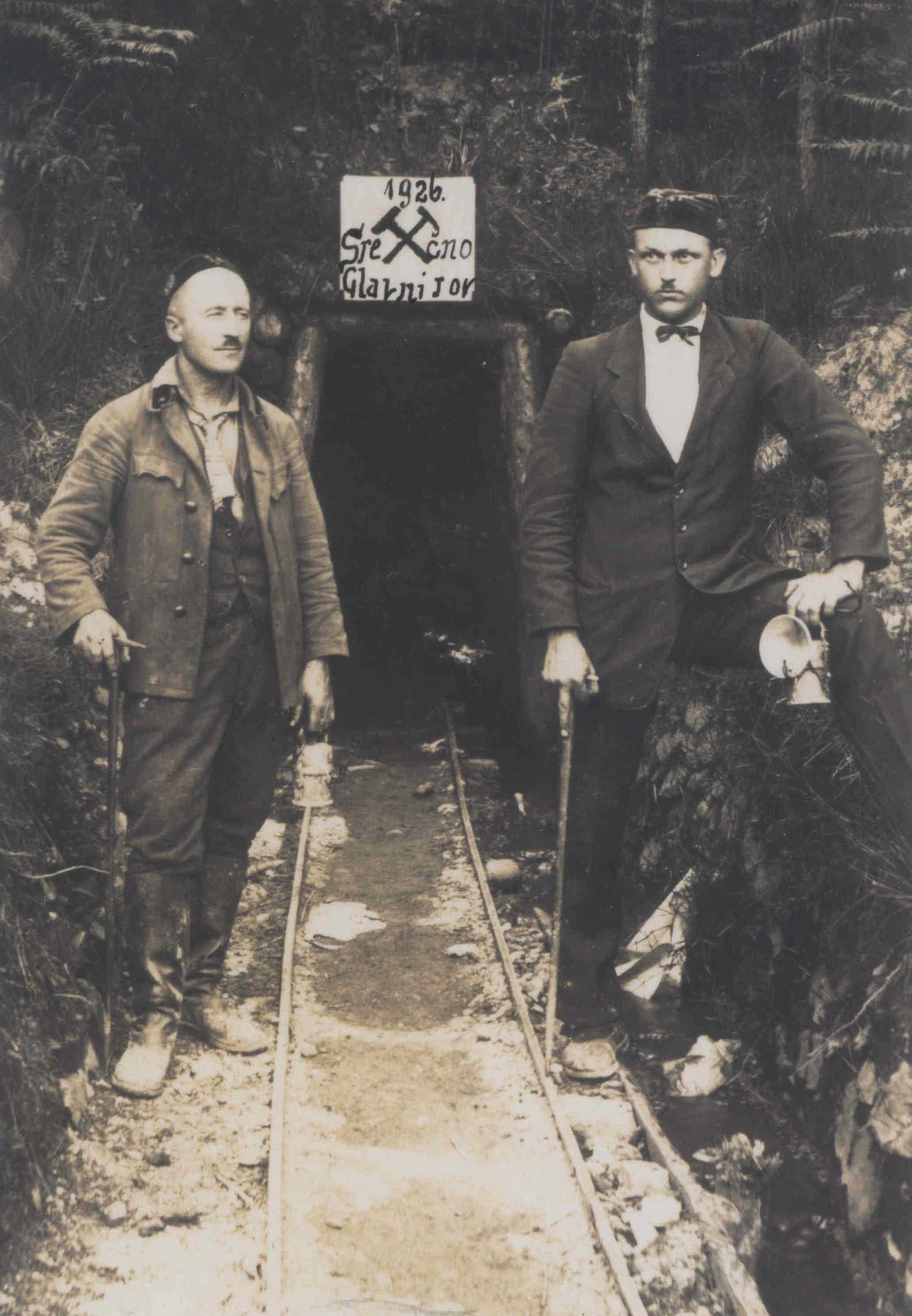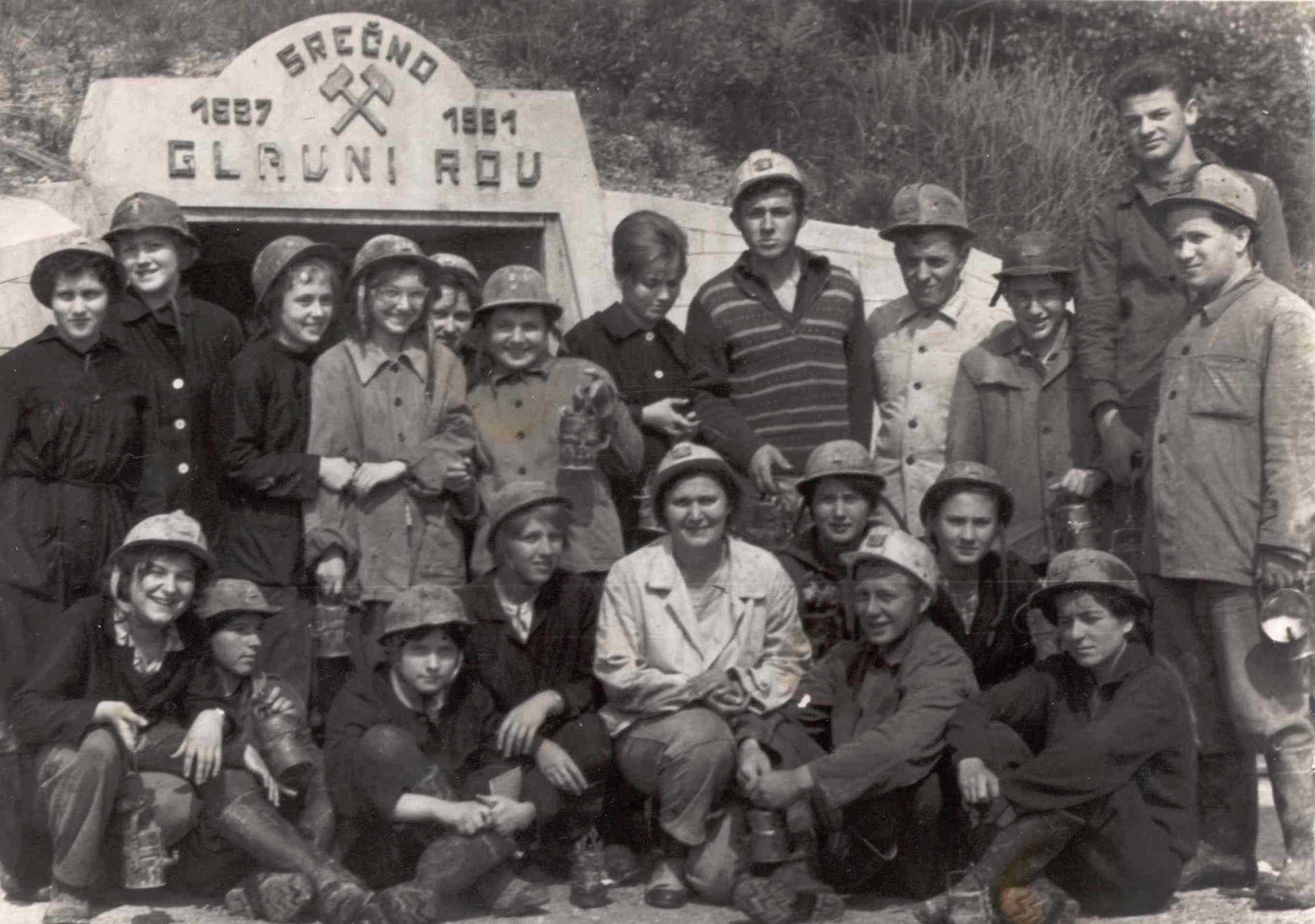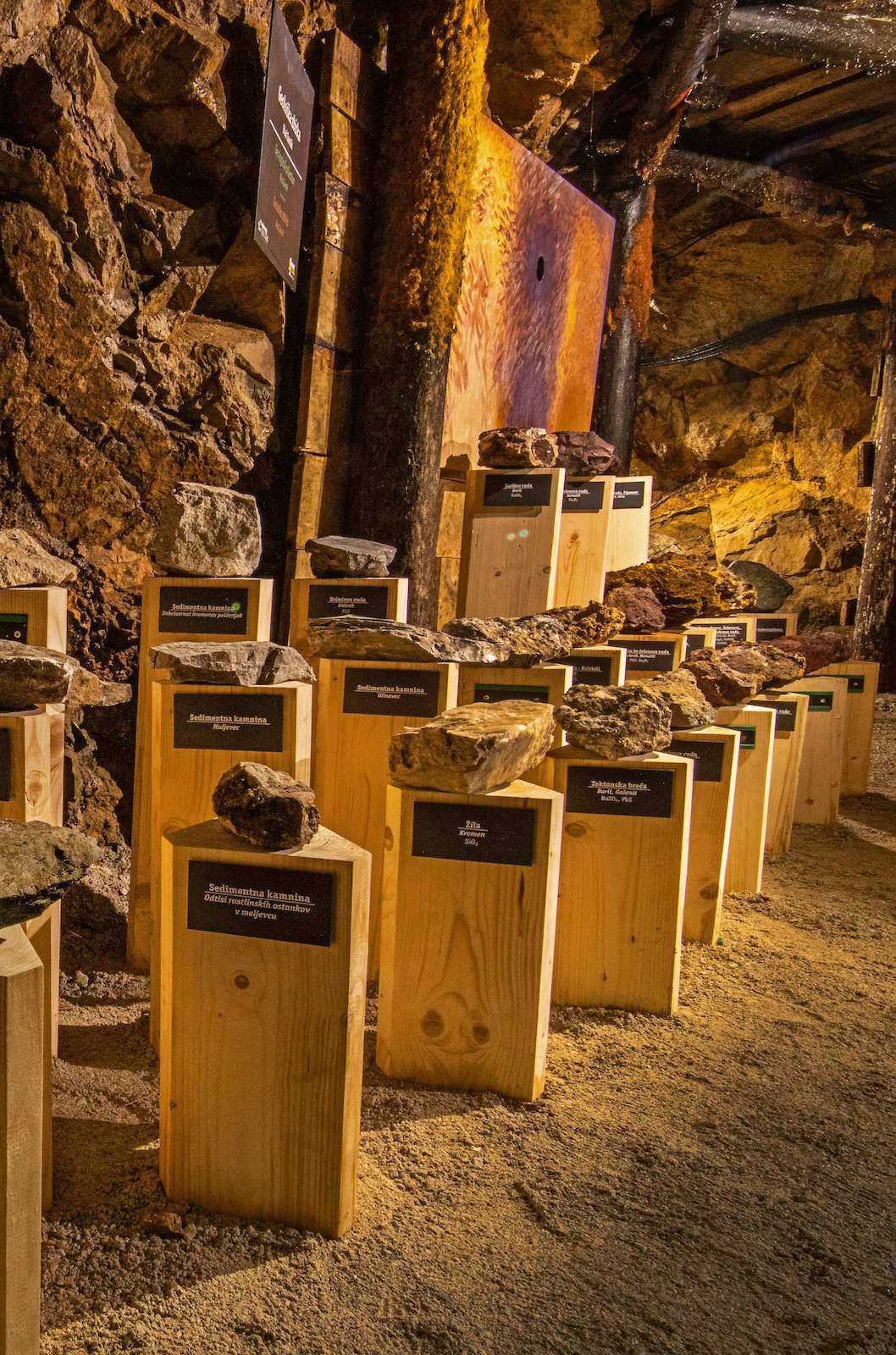
Sixty different types of minerals
The Sitarjevec mine is one of the poly mineral ore grounds with an exceptional mineral diversity. It is one of the richest sites of various minerals on European and global scale. It contains more than sixty different minerals, the most important minerals are galenite, sphalerite, cinnabar, chalcopyrite and barit.
he world mineral heritage includes cinnabar crystals that are up to 6 cm high and sets of cerussite crystals that are up to 10 cm high as the largest crystals of the time. The mineral rarity on a global scale is presented in a form of worms of self-native lead. For grinding jewellery is a great hematite-vulture ore, a semi-precious stone that impresses with its red and gray color.
The mine contained rich deposits of lead and mercury ore, as well as ores containing zinc, copper, iron and barit. The Sitarjevec mine was one of the largest deposits of lead ore on a European scale. One of the most attractive properties of the minerals in the Sitarjevec mine is their glow in the whole range of colors, which is caused by the breaking of light on their surface. You can see the glow of some of them in the Export Pit of the Mine.
Limonite dripstones
The visibility of the Sitarjevec mine in the wider area is distinguished by exceptional limonite dripstone structures such as stalagmites, stalactites, dripstone curtains, dripstone spaghetti, which are unique in the European space. They grow at high speed in an abandoned mine tunnels. Under favorable conditions such as a constant inflow of mineral-enriched cave waters, temperature, humidity and balanced microflora, the caps grow up to 5 cm per year.
The colorfulness and picturesqueness of the mine pits is complemented by yellow limonite mud, which is an excellent natural pigment. The Sitarjevec Litija Mine is the only known place of growing limonite dripstones in Central Europe. Limonite dripstone structures can be admired in the Main Pit.
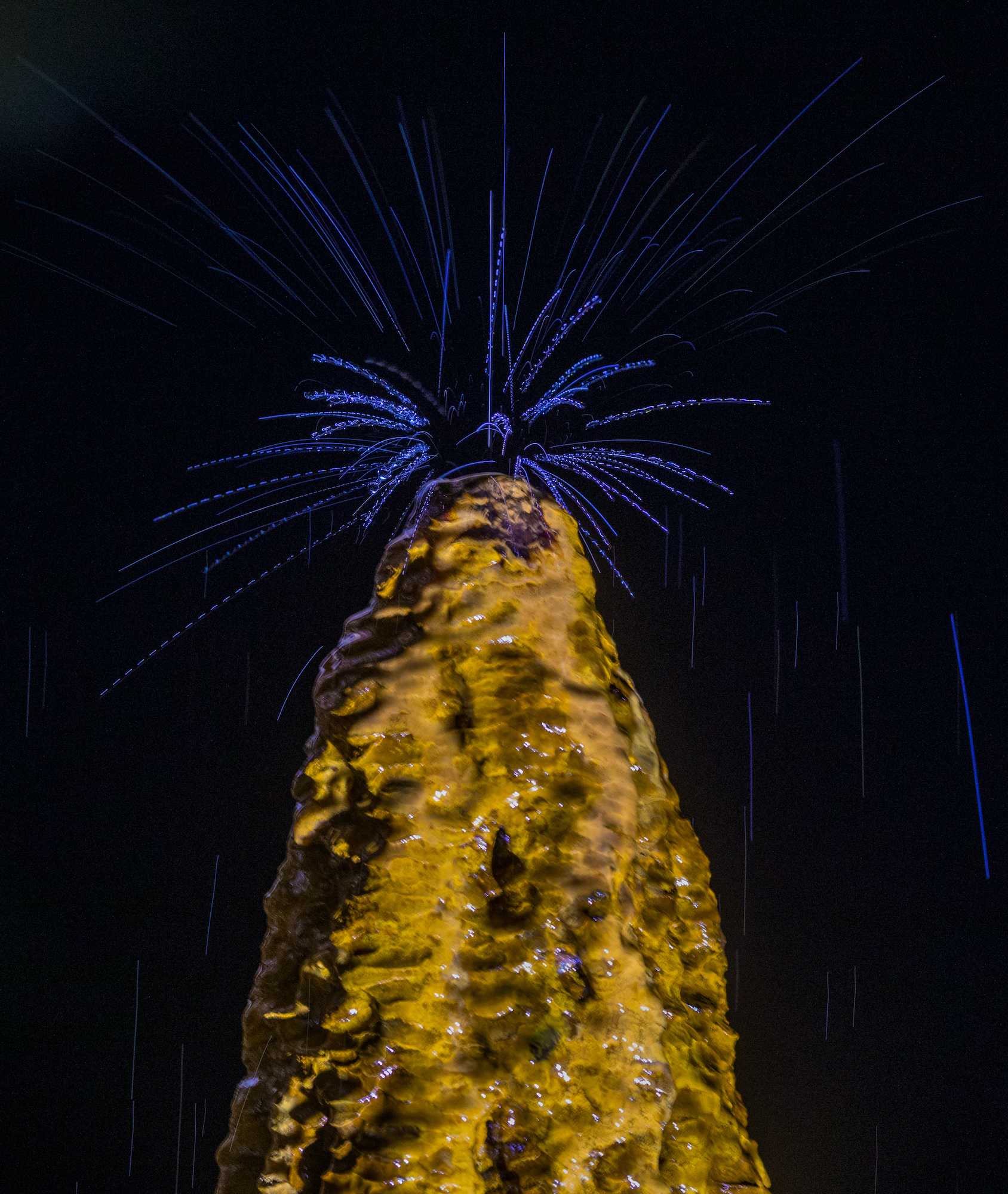
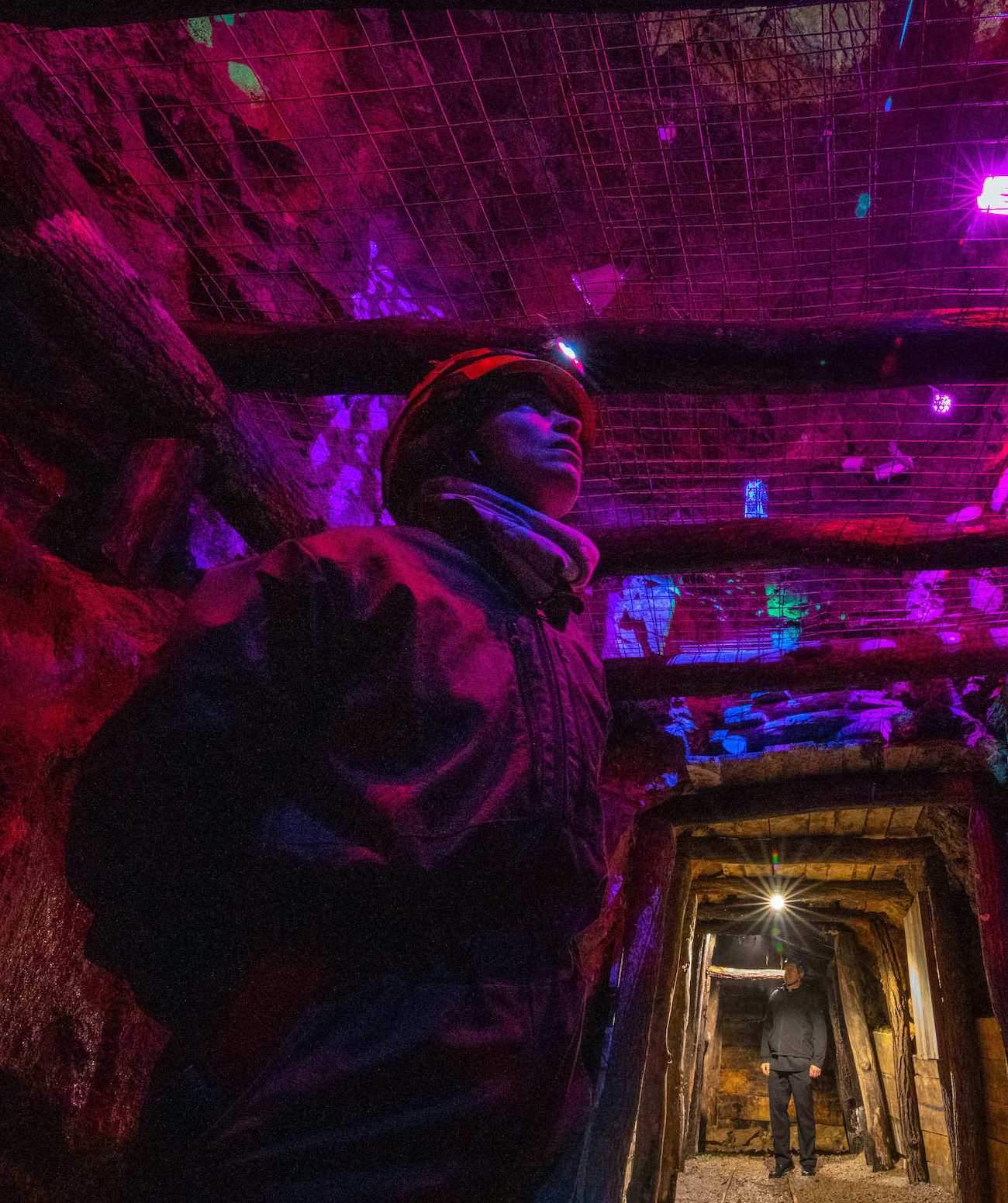
Exceptional coloring of the mine
The Sitarjevec mine is distinctly colorful. The warm yellow colors of the iron pigment are visible throughout the mine, in the Export pit at the sides and on the ceiling, and in the Main pit also on the bottom in the form of mining mud. The excellent pigment is suitable for painting and dyeing textiles, which the visitor can see in the exhibition in the Export pit.
In addition to the okra, the red hematite and white barite are also useful in Sitarjevec for painting purposes. The Sitarjevec colors create a special atmosphere, as the artists expressed with a light performance of unusual lamps and fireflies, which were hung under the ceiling of the mine shaft in the Export pit.
Mountain formation and tectonic slides
The Litija’s ore field with Sitarjevec is stretched in a series of wrinkled rocks, which were formed by the high pressures of the mountainous processes. Tectonic events caused individual blocks to rise or descend, stack rocks and elsewhere to burst, or cause numerous tectonic fault lines. This created tectonic slides which like a mirror, smoothed the surface of the groundbreaking surface. The rocks of today's Posavic hills folds formed along the equator, which is a testament to the journey of the continents and how long the rocks have traveled in 300 million years. After a long journey, they can be admired at the Sitarjevec Litija Mine.
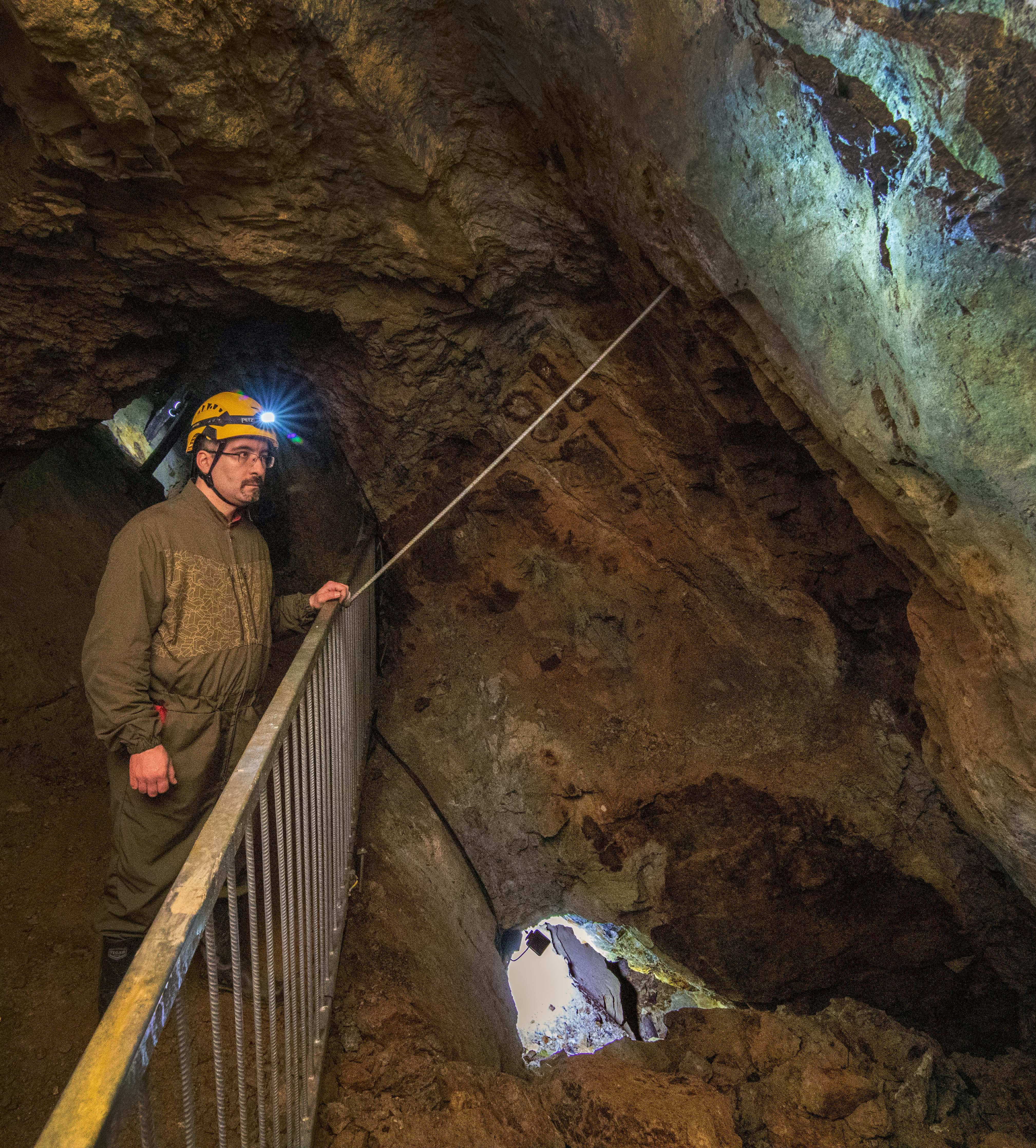
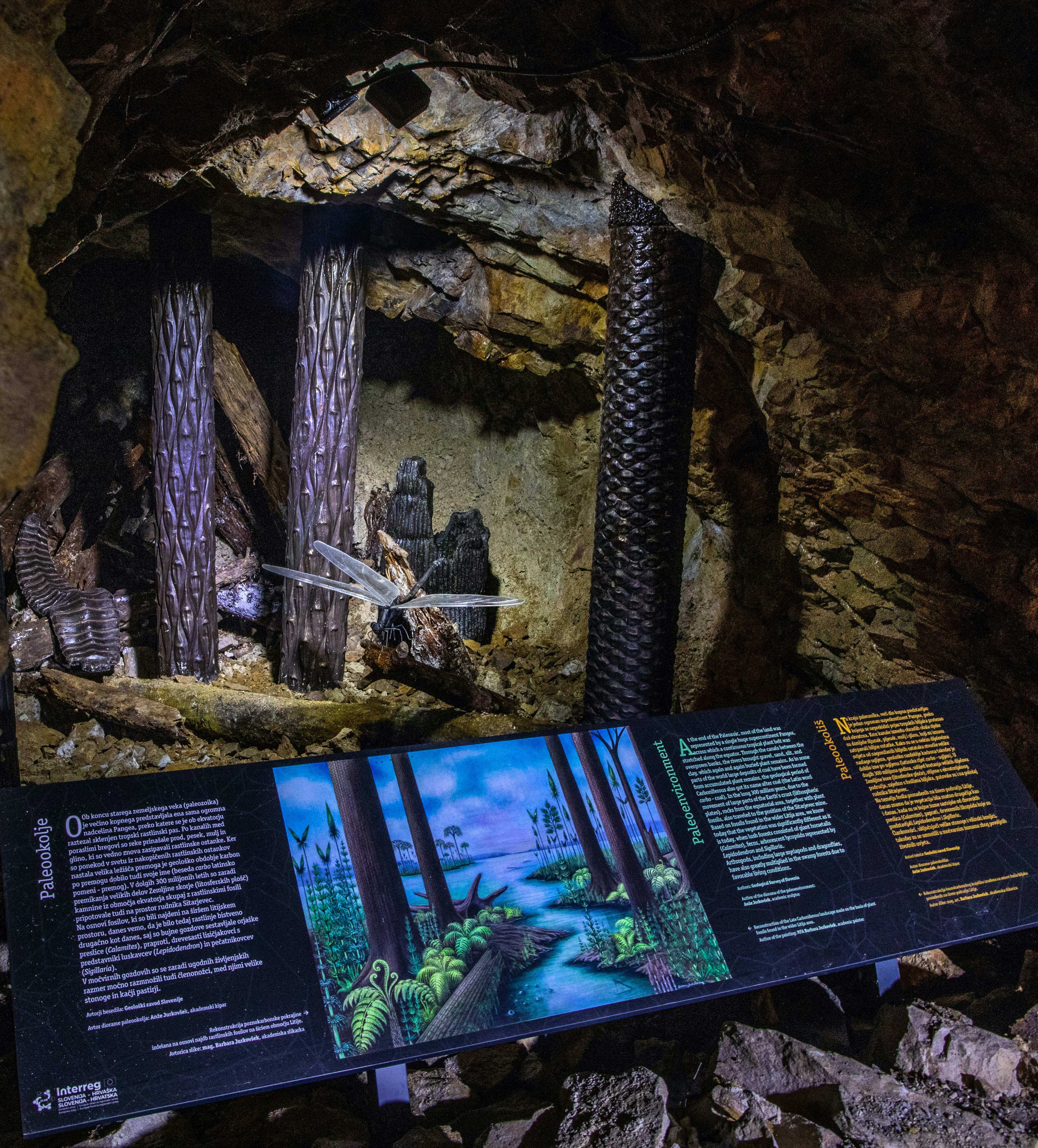
Reconstruction and interpretation of the paleoenvironment
In the long 300 million years, due to the movement of lithosphere slabs of rock from the area of the equator together with plant fossils, they also traveled to the area of Sitarjevec. Based on fossils that were also found in the wider area around Litija, we know that the vegetation was significantly different from todays. Lush forests consisted of up to 40 m high tree ferns and first gymnosperms.
In the marsh forests, many large amphibians were managed, including the giant dragonfly, Meganeura, with a wingspan of up to 75 cm. Sculptures of plant-thick in a half-filled Export pit depict a mysterious seemingly fairytale world that, much like a pictorial reconstruction, is a careful snapshot of the scientifically researched living world at the end of the ancient Earth's ages.
The oldest Slovenian mine?
The exploitation of ore in the area of Sitarjevec is going back to the distant past. Archaeological sites in the vicinity indicate that they were mining in Litija even 4,000 years ago. From this period, the remains of dwellings and slag were found in the area of the present-day Litija Primary Court. On the Hill Sitarjevec (448 m) the remains of a settlement from the younger Iron Age were found. From the top there is a beautiful view of the Sava River, where there was once an important transport route, ideal for the development of mining in this area which the Romans took an advantage of and started digging underground.
The mine was already operational in the Middle Ages. From archival sources we know that in Šmartno pri Litiji, the mining judge for Dolenjsko region had a seat which speaks of the great importance of the mine because Šmartno was only a small village at the time. The preserved tombstone of Christof Bruckerschmied from 1537 which is now stored in church of St. Martin in Šmartno pri Litiji represents the most likely mining judge and not the mining master, as it was claimed in the past.
At the time polyhistor Janez Vajkard Valvasor lived at Bogenšperk Castle, where he also wrote The Glory of the Duchy of Carniola, the mine was closed. The cause of the closure is not yet known. Valvasor mentions old mining on the basis of large halds found (tailings embankment from the mine). Among other things he wrote that the mine was once a big one, but it was now abandoned. The mine only reopened in the last quarter of the 19th century. They took advantage of a different ore, especially lead and mercury. In addition to this, they also dug ore containing zinc, copper, iron and, in the last period of operation, mainly barit
Many owners were replaced throughout the history of the mine and mining has been repeatedly suspended. In February 1965, there was a commission meeting in Litija on the dissolution of the mine. They found that mining research did not deliver the expected results. The low content of the metal in the ore no longer allowed for viable excavation, the technical equipment of the cave was poor, the ore bodies were small and displaced in the room, making it impossible to update the way they worked. Problems with processing devices and lung diseases of miners (silicosis) also contributed to the deterioration of the situation. The Commission therefore proposed to stop the work in the cave. The production of lead and barit was still alive until the end of July 1965 before closing the plants.
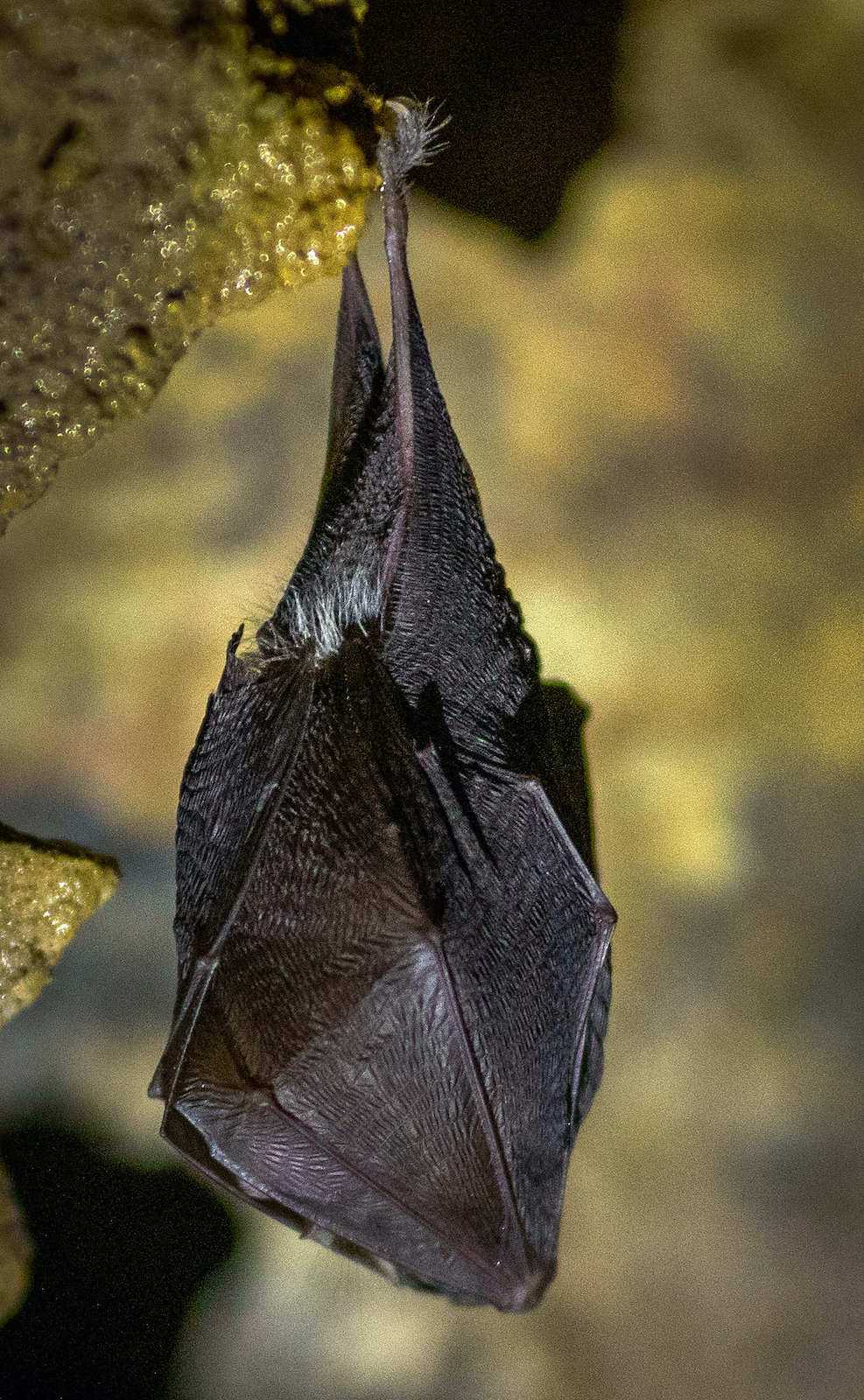
Lesser horseshoe bat (Rhinolophus Hipposideeros)
Bats are the only mammals that can fly. There are more than 1,000 species in the world, 30 of them in Slovenia. The mine is home to a protected species called the Lesser horseshoe bat, named after the horseshoe shape of its mouth. They are very small, weighing up to 10 grams and measuring from 3-5 centimetres. They are special not only because of the flight, but also because of the way they are orientating in the room with the help of inaudible ultrasound, which also helps them hunt and with hibernation – just as bears they sleep through the winter.
The mine has always been their place of residence. They go through the hatch on the door at night to hunt for mosquitoes and other insects to ensure the balance in the wild. They return to the cave again in the morning and sleep through the day in the calmer and hidden corners of the mine.
Melting factory and beekeeping lawsuit
In 1880, for the purpose of melting the excavated ore from the Sitarjevec Mine, they built the smeltery, on the left bank of the Sava River, in which a lead and mercury ore were melted. Ore was transported over the River Sava by a freight cable car that was 364 meters long, as well as wagons over a wooden bridge built in 1855. The melting factory caused a number of problems as it had a negative impact on the people, animal and plant health due to the releases of toxic sulphur gases. Despite the additional and higher chimneys built by management due to numerous complaints about pollution, in 1920 there was a mass death of bees.
The beekeeping lawsuit is the name of the struggles of Litija’s beekeepers against the Litija melting factory after the bees died. The final verdict was reached after several years at the High Court in Zagreb in favour of beekeepers. The smeltery in Litija was closed and the machines were moved to Topusko in Croatia. Beekeeping lawsuit (1921–1926) was the first successful ecological lawsuit in Slovenia.
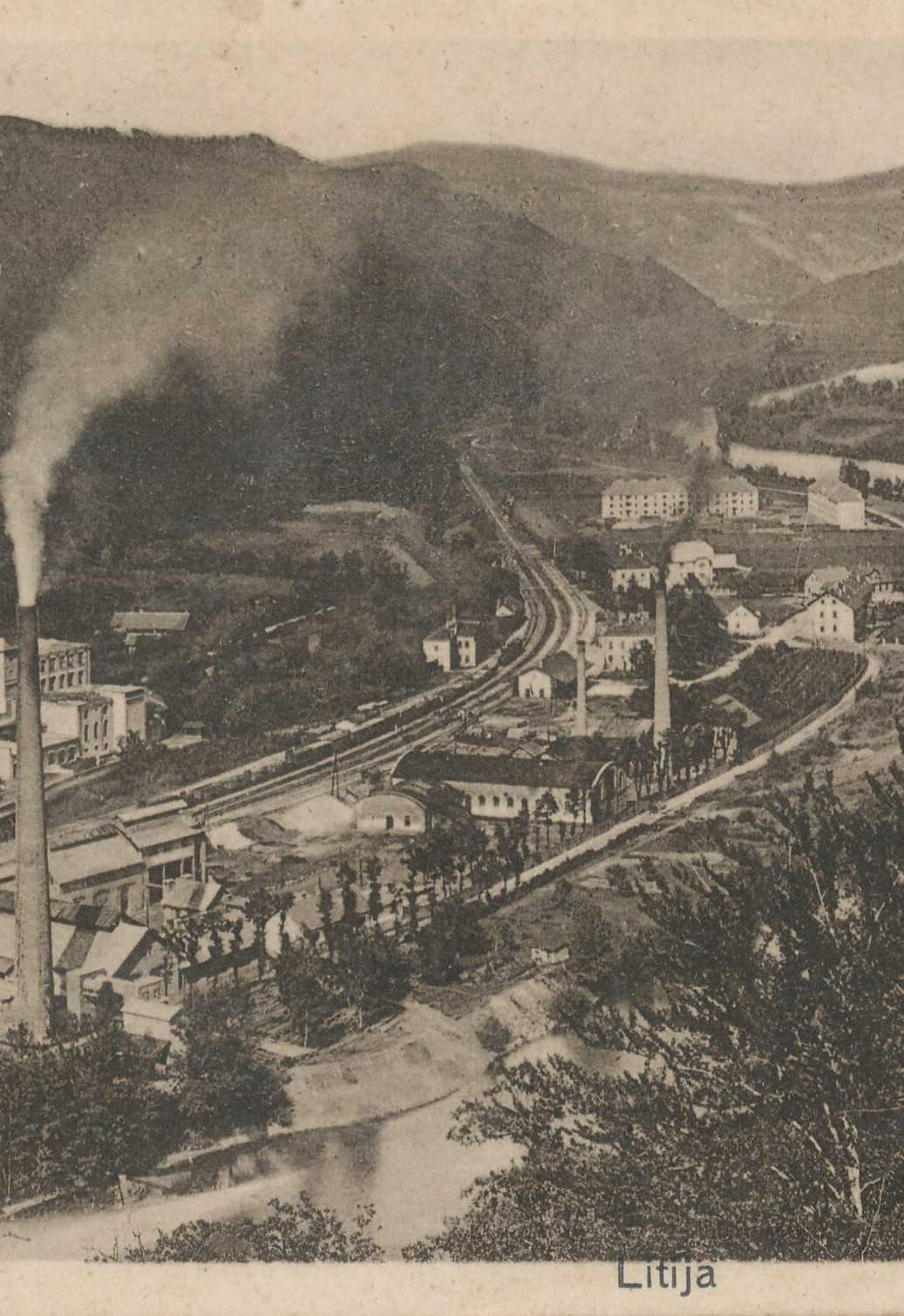
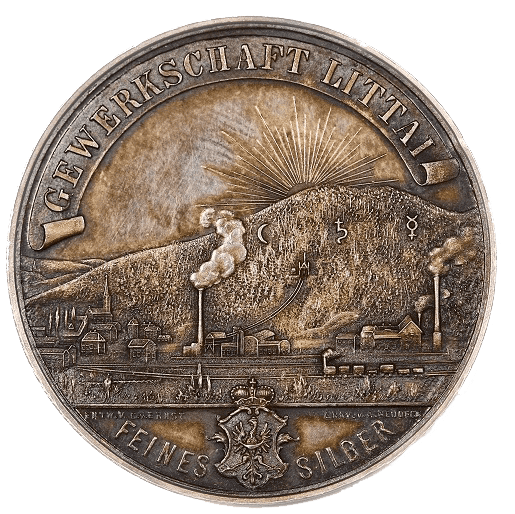
Silver coin (Litija’s tolar)
In 1886, silver was successfully obtained in the Litija’s melting factory. The silver occurs in a small amount in the lead ore. In the then main state mint in Vienna 3.6999 kg of silver was sent, from which commemorative silver coins – Litija’s tolars – were made. On the front is depicted the then melting factory, the train, the church of St. Nikolas, Sitarjevec hill and mining cable car to the solvent. On the other side is the name of the mine with the symbolically written "first silver view".
The silver coin can also be purchased from us in the form of a memory magnet.
Miner’s dictionary
The language was also formed in the Sitarjevec mine caves.
FOKSL
Wood wedge
FORT KAHEL
Metal cable car
MAŠINCA
Shooting, blasting maschine
LAMPA
Personal mining lamp
PELIGAN
Reinforced wooden pillar
ŠAJBA
Personal running cave number
ŠAHT
Export air transition shaft
ŠALA
Cage in the shaft
FIRENK
Cage guide in the shaft
ŠPRAHROR
Pipeline communication
ŠUFERCA
Leg wrapping cloth
ŠUSMOJSTER
Shooter for blasting in the pit
FALA
The last part of the tree trunk, plank
ŠIHT
An eight-hour work day
ŠTAJGER
Supervisor, foreman
HAJER
First-time digger
LEERHAJER
Assistang of the digger
LAUFAR
Beginner or unqualified miner
OBERŠTAJGER
Manager
CAJH
Tool
HERC
Coal shovel
KRAMP
Digger
HINKO
Excavation hammer
PORKHAMER
Excavation digging maschine
KROCA
Large hoe
ŠTEMPEL
Support iron or wooden stand
RIGEL
Sub-ceiling
UNTERCUH
Cross-border sub-ceiling
KVEL
Wooden crack
ŠPRUDEL
Piece of plank
FORTNA
Cave ladder
ŠTREKNA
Pit excavation, tunnel
GEZENK
Angle oliquely pit
AVPRZUH
Demolition of the ceiling behind the excavation
LEGNT
Tallings
MAŠINHAUS
Export machine gun
URLAUB
Holiday
Follow up materials
Planning your visit?
There are several tourist attractions in the municipality of Litija.
We invite you to visit some of them in addition to the mine.
